#and a distinctive cultural heritage.
Explore tagged Tumblr posts
Text
Discovering Brunei: A Jewel of Southeast Asia
Nestled on the northern coast of the island of Borneo, Brunei is a small yet fascinating country that often goes unnoticed by many travelers. Officially known as the Nation of Brunei, the Abode of Peace (Negara Brunei Darussalam), this sultanate offers a unique blend of rich history, lush landscapes, and a distinctive cultural heritage. A Brief History of Brunei Brunei’s history dates back to…

View On WordPress
#" this water village is home to over 30#000 people. Jame&039; Asr Hassanil Bolkiah Mosque: The largest mosque in Brunei#A Brief History of Brunei#Accommodation and Affordability in Brunei#Accommodation in Brunei ranges from luxury hotels to budget guesthouses. While prices are generally higher than in neighboring countries#Activities for Tourists#Activities for Tourists in Brunei#adventure#africa#Airports and Infrastructure in Brunei#Ambuyat (a sago dish)#and a distinctive cultural heritage.#and a variety of fresh seafood.#and Indian flavors. Must-try dishes include Nasi Katok (rice with fried chicken and sambal)#and it significantly influences daily life and customs. The culture of Brunei is a mix of Malay traditions with Islamic influences#and larger shops. It&039;s still wise to carry some cash for smaller transactions. Q: What cultural norms should I be aware of? A: Dress mo#and the political environment is stable. However#and the sale of alcohol is prohibited. However#and vibrant culture. Whether you&039;re exploring its stunning mosques#and visitors will find a welcoming and respectful society.#Brunei became a British protectorate to prevent annexation by its more powerful neighbors. The British influence lasted until 1984 when Brun#Brunei controlled much of Borneo and parts of the Philippines.#Brunei has a relatively high cost of living compared to other Southeast Asian nations#Brunei International Airport (BWN) is the main gateway to the country#Brunei is a small yet fascinating country that often goes unnoticed by many travelers. Officially known as the Nation of Brunei#Brunei is an absolute monarchy where the Sultan wields extensive powers. The country has a stable political environment with no significant#Brunei is considered one of the safest countries in Southeast Asia. Crime rates are low#Brunei promises a memorable journey.#Brunei&039;s history dates back to the 7th century when it was part of the powerful Srivijaya Empire. The Sultanate of Brunei rose to promi#Bruneian cuisine is a delightful blend of Malay
0 notes
Text
.
#truly no faster way to make me so so ill than the seol and the seolite diaspora DE tag on ao3. not in a bad way not in a good way either#also last week i hung out w a friend i hadn't seen in a while and we joked about diaspora lit bingo a lot#but yeah idk. the way my sister is reconnecting w her asianness through like. kdramas/cdramas and kpop etc#the way i only have about 4 chinese language songs liked on spotify and they're like#one from the CRA soundtrack two bc i looked up an artist whose photos were on tumblr and who i found hot#and one from my white roommate who's learning mandarin#and i wonder if my parents are like. so bummed that we ignored them and made fun of their shows and music and accents as elementary schoole#and now they see her doing this and me. idk. claiming POCness via something i never engaged with in a way i find satisfactory#or idk. the whole immigrant parents being your passports to your language/culture and once they die it's game over#ESP bc you only ever took enough chinese classes to graduate hs or college no more#and kim kitsuragi is suchhhhhhh an interesting look at that bc like. he is an orphan and he does have zero cultural or language ties to seo#like. he would absolutely dannyamericanbornchinese himself if he could#and i want him to reconnect like i imagine him reconnecting w being asian and it causes feelings of comfort and such in me#but like. he shouldn't have to obviously and#one of the notes of a fic in that tag is from a biracial person who says#I flip between wish fulfillment and scrutinizing the degree Kim 'needs' to reclaim his heritage#and like yeah. yeah. that thing#and idk i don't think there's a distinct chinese-american culture the way that chinese-american cuisine is like. A Thing you know#maybe i'd feel better if there was that#and if there was just one other seolite person in disco elysium but i think kim's racial isolation is purposeful#what is there for me but to idk. reread the joy luck club and have another crisis about it#personal
14 notes
·
View notes
Text








Excited to share the latest addition to my #etsy shop: Wood viking longship wall hanging. Wood Ragnar Lothbrok longship decor. Jormungandr viking wall panel.
#Фото профиля mjolnir.viking.jewelry#Wood mjolnir wall hanging#Introducing our Wood Mjolnir Wall Hanging#crafted in the iconic Oseberg Style a tribute to Viking heritage and craftsmanship.#✧ Material: oak#✧ Height: 15.74 inches (40 cm)#✧ Width: 12.59 inches (32 cm)#This remarkable wall decor features a Thor's hammer design inspired by the prow of the famous Viking ship from the Oseberg burial site.#Meticulously carved from high-quality oak#this wood carving captures the essence of Viking artistry and symbolism. The intricate detailing of the Mjolnir design adds a touch of Nors#Embrace the spirit of the Vikings and elevate your space with this unique and historically inspired wood Thor hammer decor. Whether you're#a lover of Viking culture#or simply seeking distinctive decor#our Wood Mjolnir Wall Hanging is sure to leave a lasting impression.#MjolnirVikingJewelry#Mjolnir#ThorHammer#WoodWallHanging#NorseDecor#VikingDecor#HandmadeWoodArt#NorseMythology#VikingArt#WoodCraft#NordicDesign#VikingCulture#RusticDecor#WoodCarving#NorseSymbols#HomeDecor
0 notes
Text
this morning i took half an adhd pill and now i've got an 8 page doc and 9176737103487 tabs open on theories and discussion about the early peopling of America
#history#listen i like cultural heritage#might go back to school and get really into it#i'm just doing prep work technically#also the story i've discovered is awesome#there seem to have been at least 3 distinct waves of migration#prob by boat#i think there's a good chance the earliest to come down here got here by mistake trying to go elsewhere#otherwise i cant explain how you leave like china and end up in chile#but does seem to be what a couple of sites indicate
0 notes
Text

If you are looking for Living Room Carpets and Rugs you may contact us at [email protected] or whats ap at +91-9839141651
#Artisan carpets#Artisanal living room decor#Artistic floor coverings#Bespoke carpet designs#Cultural heritage rugs#Cultural-inspired carpets#Custom-sized living room rug#Customized rugs#Distinctive area rugs#Eco-friendly handmade carpets#Exquisite wool rugs#hand-knotted rugs#Handcrafted luxury carpets#Handmade carpets#Handmade rug artistry#Handwoven Rugs#Heritage-inspired living room rugs#High-quality living room rugs#Intricate patterned rug#Living room rugs#Luxury carpets#Natural fiber carpets#Personalized rug solutions#Premium handmade rugs#Sustainable rug choices#Tailored rug designs#Textured handmade carpets#Timeless rug options#Traditional carpets#Unique area rugs
0 notes
Text



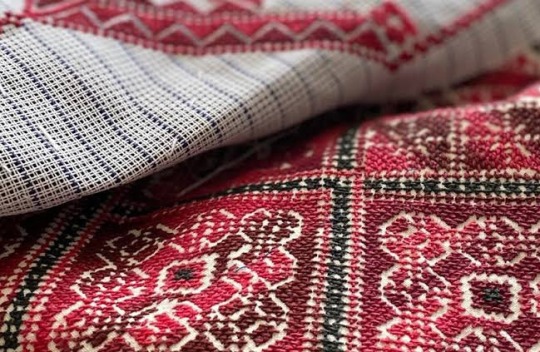




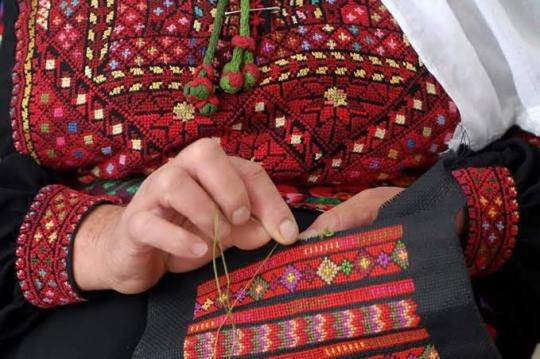

Tatreez (Arabic: تطريز) is a type of traditional Palestinian embroidery. Tatreez uses traditional cross-stitch embroidery and is practiced largely among women. The craft was originally practiced in rural areas of Palestine, but is now common across the Palestinian diaspora. Historically, each village in Palestine had their own tatreez patterns. The landscape was a major source of inspiration for the patterns and motifs, which speaks to the variation in style that was common to see among all of the different tatreez expressions that were particular to each Palestinian village.
After the violent displacement and dispossession of Palestinians in 1948, people were living together in refugee camps. The different styles of tatreez became less distinct and have continued to evolve with the diaspora. Following 1948, tatreez evolved to reflect the experiences of Palestinians. Palestinian women began to incorporate the Palestinian flag and its colors into their tatreez as a means of resistance to the occupation of Palestine. Consequently, tatreez became an expression of the identity, heritage and resistance of Palestinian women and their dedication to preserve their ancient culture.
1 / 2 / 3 / 4 / 5 / 6 / 7 / 8 / 9 / 10 / 11 | textile series
#textiles#ots#tatreez#palestine#palestinian art#palestinian culture#free palestine#from the river to the sea palestine will be free#embroidery#textile art#middle east#levant#levantine#fashion
14K notes
·
View notes
Text
No one made any distinction to me when I was growing up when a word wasn’t English. Andale was just another way to be told “hurry up,” and I was certain other parents told their kids, “Watch your cabesa,” when getting into the car. I laughed myself sick the first time I saw Dragon Ball Z because a ladies name was Chi Chi and I only knew that meant boobs.
All my moms family was brown and I desperately wished I was too. I wanted beautiful black hair like my mom and dark skin that didn’t burn. I didn’t like when people asked my mother if she was my nanny when they saw us together. I didn’t like that people told me I looked like my dad. They just meant I was pale.
I’d proudly announce to people that I was Mexican and become furious when they gaped or disbelieved me. My dads side has no cultural roots. When questioned my dad shrugs and says, “English maybe? I dunno.” I just wanted to be Mexican growing up. Alas, I’m only a quarter descendant of an immigrant family who vehemently didn’t want to be Mexican.
My great grandmother announced that we were American now, not Mexican. She embraced American culture as much as possible, while never learning English. My nana was put into school and punished anytime she spoke Spanish. She got caught halfway between both languages. Forced to spend her childhood raising her younger siblings she never learned to cook tamales with her mother and her friends.
When she had her own children she didn’t teach them Spanish. She used it to gossip with her own friends about them on the phone and resisted teaching them more than to come running when she shouted “Araña!” to kill a spider for her.
Thus came my mom, with her brown skin and dark hair, adrift from her culture but treated as lesser by her adopted one. My great grandmother would rejoice to see me as her descendant, white, ignorant of Spanish, the perfect American she wanted her family to be.
When I was born my nana shouted, “What’s that red on her?” only to realize it was my hair. She delighted in her palest grandchild, telling me often I was her favorite.
I’m used to the disbelief now when I tell people I’m Mexican. I can laugh and show pictures of my mom. My friend from work joked to me that I’m always coming out of the closet, over and over, because both my minority statuses aren’t as visible as her black skin.
I was recently lamenting this to a white southern friend the same one I cast psychic damage on during a DnD day. “I wish I could feel more connected to my culture, but I’d be such a fraud pretending my life is the same as other Hispanic people.”
“Skin color doesn’t matter,” he announced blithely to the choked outrage of our Indian friend in the kitchen, “You’re just as Mexican!”
I regarded him in astonishment and said, “I think skin color matters a lot. I am Mexican, but I don’t have the same cultural roots or experiences of people who are perceived as Mexican. My family didn’t pass the cultural heritage down. I think a lot of immigrant kids feel this way but it’s different for me.”
He rambled about how I’m just as valid and I quietly disregarded his advice. I could try to reconnect with my roots, but I know I’d just be another white girl pushing into a POC space.
Instead I make tamales by myself, sweating over the steaming corn husks, and I snap at people who make racist jokes about my family to me, feeling safe because my skin is the same color as theirs.
2K notes
·
View notes
Note
You know a lot about the cultural influences behind various aspects of D&D, so: do you know the origins of the thing in 3.5 where it seems like a main way they want you to play as a psionic warrior is to grow massive claws and get breath weapons? It's so specific and out of left field for a "warrior who uses the power of the mind" that I've always wondered.
Much of 3E's handling of psionics closely follows material presented in the 2E supplement The Complete Psionics Handbook, which, contra later editions' habit of treating psionics as a variant of wizardly magic, presents psionics as a totally separate and mutually incompatible thing. One feature of this treatment is psionics having its own distinct set of "schools", or disciplines: clairsentience, psychokinesis, psychometabolism, psychoportation, telepathy, and metapsionics.
The 3E psionic warrior stuff is a more or less direct port of the discipline of psychometabolism; I can only presume that this is because it's the most "fightery" of the Psionics Handbook disciplines, though I can't back that guess up. Apart from your cited examples, other psychometabolic powers presented here include self-healing; energy absorption; turning into animals, objects, or living shadows; wuxia-style "lightfoot" techniques; camouflage; shrinking or expanding; stretching one's limbs Mister Fantastic style; and others.
Of course, that just kicks the can further down the road: if the 3E psionic warrior is a port of 2E's psychometabolism specialist, where the heck did 2E get the idea for the discipline of psychometabolism? The general idea of shape-shifting and fire-breathing and such being psychic powers that can be cultivated through mental discipline pops up in quite a few places, but we're looking for a specific constellation of tropes, not isolated instances of little bits and pieces of it.
The Complete Psionics Handbook helpfully includes a comprehensive bibliography of its inspirations (remember when Dungeons & Dragons used to have those?), though I'm unacquainted with most of the books it cites, so that's where my ability to help in this respect ends. I'll include a copy of that bibliography under the cut, though – maybe one of this blog's followers can point out which of its entries, if any, might be most directly informative.
Taken from page 113 ("Related Reading") of The Complete Psionics Handbook:
Fiction
Bester, Alfred; The Demolished Man, The Stars My Destination.
Bradley, Marion Zimmer; Darkover series: The Bloody Sun, Children of Hastur, Darkover Landfall, The Forbidden Tower, Hawkmistress!, The Heritage of Hastur, The Keeper's Price, The Planet Savers, Sharra's Exile, The Shattered Chain, The Spell Sword, Star of Danger, Stormqueen!, The Sword of Aldones, Thendara House, Two to Conquer, The Winds of Darkover, The World Wreckers.
Brunner, John; The Whole Man.
Del Rey, Lester; Pstalemate.
Henderson, Zenna; The People, The People: No Different, Holding Wonder.
Foster, Alan Dean; Flinx series.
King, Stephen; The Dead Zone.
Kurtz, Katherine; Deryni Rising, Deryni Checkmate, High Deryni.
May, Julian; Saga of the Pliocene Exile series: The Many-Colored Land, The Golden Torc, The Non-Born King, The Adversary.
Nourse, Alan E.; Psi High and Others.
Pohl, Frederik; Drunkard's Walk.
Russell, Eric Frank; The Mindwarpers.
Robinson. Frank M.; The Power.
Schmitz, James H.; The Universe Against Her, The Lion Game, stories.
Simmons, Dan; Carrion Comfort.
Sturgeon, Theodore; The Synthetic Man.
Tucker, Wilson; Wild Talent.
Van Vogt, A.E.; Slan.
Zelazny, Roger; Creatures of Light and Darkness, The Dream Master, Lord of Light, lsle of the Dead, This Immortal, To Die in ltalbar.
Nonfiction
Brookesmith, Peter (ed.); Strange Talents, from the series "The Unexplained: Mysteries of Mind, Space, and Time;" Orbis Publishing, London, 1983.
Index of Possibilities: Energy and Power; Pantheon Books/Random House, New York, New York, 1974.
Mind Over Matter, Powers of Healing, Psychic Powers, Psychic Voyages, from the series "Mysteries of the Unknown;" Time-Life Books, Alexandria, Virginia, 1987.
Puharich, Andrija; Beyond Telepathy; Anchor Press/Doubleday, Garden City, New York, 1973.
Rhine, J.B.; The Reach of the Mind; William Sloane Associates, New York, New York, 1947.
635 notes
·
View notes
Text

1969 Ford Mustang Boss 302
This iconic 1969 Ford Mustang Boss 302 is a true muscle car legend. Its aggressive styling, powerful engine, and legendary racing heritage make it one of the most sought-after classic cars of all time.
10 Amazing Facts About the 1969 Ford Mustang Boss 302:
1. Racing Dominance: The Boss 302 was originally designed for racing, and it quickly became a dominant force in SCCA Trans-Am competition.
2. Powerful Engine: Under the hood, the Boss 302 featured a specially tuned 302 cubic inch V8 engine that produced an impressive 290 horsepower.
3. Distinctive Styling: The Boss 302 featured unique exterior styling, including a revised front grille, hood scoop, side stripes, and rear spoiler.
4. Limited Production: Due to its racing heritage, the Boss 302 was only produced in limited numbers, making it a highly collectible car today.
5. Investment Opportunity: Boss 302 Mustangs have a strong track record of appreciating in value, making them a desirable investment for car collectors.
6. Cultural Icon: The Boss 302 has appeared in numerous movies, TV shows, and video games, cementing its status as a cultural icon.
7. Performance Legend: The Boss 302's reputation for performance and handling is legendary. It's a car that delivers an exhilarating driving experience.
8. Nostalgic Charm: The Boss 302 evokes a sense of nostalgia and takes you back to the golden age of muscle cars.
9. Timeless Design: The Boss 302's styling is so timeless that it still looks stunning today. It's a car that will never go out of style.
10. Pure Driving Joy: There's nothing quite like driving a classic muscle car like the 1969 Mustang Boss 302. It's a car that inspires confidence, excitement, and a sense of pure driving joy.
619 notes
·
View notes
Text
I think Discovery does a good job with having queer characters in a futuristic sci-fi setting where they feel queer by the viewer’s standards AND queer within the setting of the story, but without it seeming like cultural standards have just been frozen for a few hundred years.
No one conceals their queerness or seems at all anxious or self-conscious about it, but Adira’s coming out is still treated like a significant moment and something that brings them closer to Stamets, and Gray mentions transitioning by name as something that took up his time and attention. The queer members of the Discovery behave like a family, like a unit within the crew.
From this, you can vaguely take away that the concept of queerness and queer community exists within the Federation, but not homophobia (at least as far as we see).
This is what I’ve always wanted from Star Trek and it’s so simple, but I think a lot of people fail at this when it comes to writing real oppressed groups into fantastical settings. “This character is different, but we can’t persecute them, how will we characterize them?? That’s scary… I’ll just ignore it.”
I remember watching a redlettermedia review of some nutrek (a bad idea) where they were complaining about forced wokeness and citing an episode of TOS where Abraham Lincoln calls Uhura a racial slur (just realized how stupid that sentence is) and she’s unfazed because she’s never experienced racism so it has no weight to her. The boys concluded that since racism, countries, war, etc. no longer exist on Earth, then human characters shouldn’t be so aware of what cultural categories they are. As if blackness would disappear without racism 🤨 and ethnicities would disappear without countries 🤨 and pride in one’s culture and heritage would disappear without wars 🤨. I think this is a common point of view that doesn’t really make sense, and I’m glad TV writers seem to be changing their minds (or just hiring minorities as writers lol).
Picard is still French without the country of France, and Sisko is Creole, and Dr. Culber is capital-g Gay, and Riker is a proud trombonist (a distinct social category of the twenty-first century). Good for them.
518 notes
·
View notes
Text
Why Is The Jewish “Representation” In Agatha All Along So Problematic???
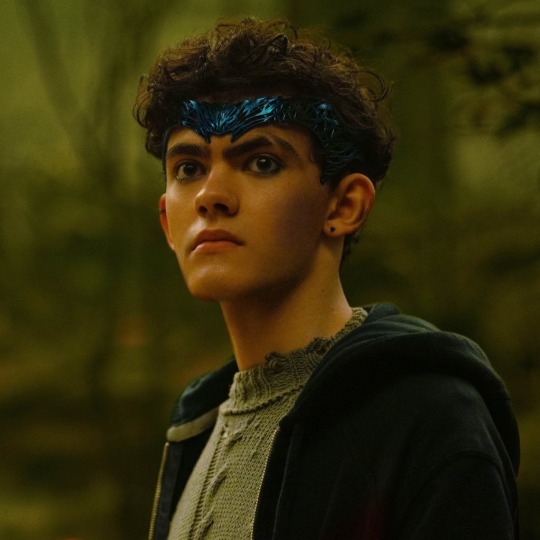
When it was first confirmed that Joe Locke was going to have a role in Agatha All Along, most fans quickly came to the conclusion that he would be portraying Billy Kaplan AKA Wiccan which unfortunately ended up being correct.
The problem with that casting you ask?
Joe Locke isn’t Jewish and he is playing one of Marvel’s most prominent Jewish characters. Whilst many goyim (non-Jewish people) often inaccurately perceive Jewishness to solely be a religious identity which is a massive oversimplification of what it means to be a Jew, Jewish people are actually an ethnoreligious community which means that we’re our own distinct ethnic group and culture that have a traditional religion that is intrinsically tied to our identity and culture regardless of individual Jewish people’s levels of observance.
And because we are an ethnoreligious group, that makes the casting of Joe Locke, who is not ethnically or religiously Jewish, inherently problematic to say the least, especially when placed into the wider context of Jewish representation in the MCU.


Marvel Studios has previously been criticised for the way that it’s approached adaptations of Jewish characters for the MCU with the two main examples being casting Elizabeth Olsen as Wanda Maximoff, who is Romani and Jewish in the comics, and Oscar Isaac as the Ashkenazi Jewish Marc Spector in the Moon Knight streaming series and in both cases, the heritage of the characters were either downplayed or just outright erased. So for anyone who understands the issue, it should be clear that the MCU has a poor track record when it comes to representing Jewish characters and that Agatha All Along’s adaptation of Billy Maximoff/Kaplan is just another addition to the list of disrespectful adaptations of Jewish characters.
What is the specific problem with how Billy has been adapted in the MCU?
Well, in order to answer that question, the answer has to effectively be split into two parts:
In the most recent episode of Agatha All Along, we finally learn the backstory of Billy (who had previously only been referred as “Teen” due to a spell that prevented his identity from being found out) and as part of that, we are shown a flashback to the day of Billy KAPLAN’s (the capitalisation will make sense in a bit), Bar Mitzvah, a sacred Jewish ritual that marks the transition into adulthood and the responsibilities that comes with being a Jewish adult. In this flashback, Billy (who if you’ve payed attention, is being played by a non-Jew) is shown wearing traditional religious garments and handling what is potentially an actual Torah scroll.

Within Judaism and Jewish culture in general, handling a Torah and then reading from it is seen as both a great honour and responsibility for any Jew who is called for an Aliyah so seeing a non-Jewish actor who has no experience as a Jewish person and in interviews, has mocked fans who criticised his role in the show, wearing my culture and religion as a costume to advance his career just felt wrong to me. I love Marvel and I take great pride in superhero comics being an art form that was created by Jewish immigrants so seeing one of the biggest franchises in history cast a non-Jewish actor to appropriate Jewish culture just felt disgusting to me. At least with Moon Knight, all we got was the smallest references to his Jewish heritage rather than being subjected to seeing the christian Oscar Isaac partake in sacred closed rituals.
And now, moving onto the second part of the answer to the above question, after we see Billy reading from the Torah and are then shown the party following the ceremony, we learn that the flashback takes place concurrently with the final episode of WandaVision. Because of that, the party has to end early so that guest can evacuate and soon, Billy and his parents are in a car accident where Billy dies…
…until his body is quickly revived after the soul of Wanda and Vision’s artificially constructed son, Billy MAXIMOFF possesses and takes control of Billy Kaplan’s body whilst erasing everything that made Billy Kaplan who he was. The reason why this is especially problematic is because of the great importance of the soul within Judiaism. According to Jewish laws, one of the most important things that distinguishes Jewish people from goyim is a Jewish soul and in Agatha All Along, one of the main protagonist who is an adaption of a Jewish character who was created by a Jewish writer is reimagined as a non-Jewish soul that hijacks the corpse of a Jewish teenager to use as a meat puppet. It becomes even worse when later on in the episode, “Billy” is shown rejecting his identity as Billy Kaplan which effectively takes the undertones of ethnic erasure and cultural appropriation of Joe Locke’s casting and makes it an essential part of the characterisation for this incarnation of Billy.
In Conclusion?
In the Marvel Comics, Billy Kaplan is a proud queer Jewish man who was partially based on the lived experiences of his creator who is also a gay Jewish man. Becuase of that, he holds a special place in the hearts of many fans who see a piece of ourselves in him and we deserved to see the really Billy Kaplan be brought to life in a way that would honour the source material that we love and introduce mainstream audiences to a really cool and fascinating Jewish superhero who can open up so many possibilities for the more supernatural side of the Marvel Universe to be explored in further MCU instalments.
But instead, we got the bare minimum of Jewish representation followed by the complete erasure of that “representation” with the ultimate end product being a show riddled with the underlying rot of antisemitism.
#wiccan#wiccan marvel#billy kaplan#billy maximoff#agatha all along#marvel universe#marvel#marvel cinematic universe#mcu#marvel mcu#jewish superheroes#jewish representation#representation matters#representation#end jew hatred#antisemitism#joe locke#judaism#jewish
415 notes
·
View notes
Text
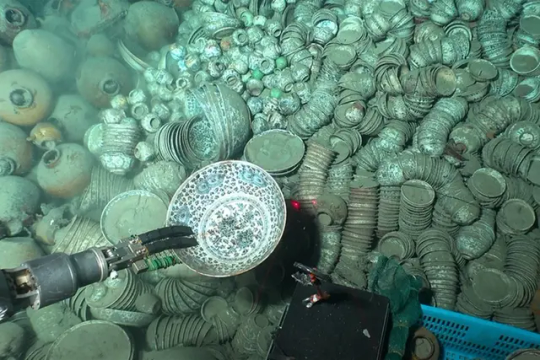
900 Artifacts From Ming Dynasty Shipwrecks Found in South China Sea
The trove of objects—including pottery, porcelain, shells and coins—was found roughly a mile below the surface.
Underwater archaeologists in China have recovered more than 900 artifacts from two merchant vessels that sank to the bottom of the South China Sea during the Ming dynasty.
The ships are located roughly a mile below the surface some 93 miles southeast of the island of Hainan, reports the South China Morning Post’s Kamun Lai. They are situated about 14 miles apart from one another.

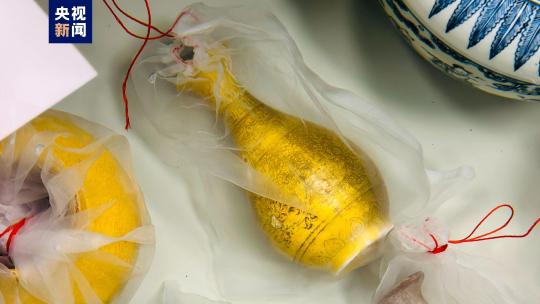
During three phases over the past year, researchers hauled up 890 objects from the first vessel, including copper coins, pottery and porcelain, according to a statement from China’s National Cultural Heritage Administration (NCHA). That’s just a small fraction of the more than 10,000 items found at the site. Archaeologists suspect the vessel was transporting porcelain from Jingdezhen, China, when it sank.
The team recovered 38 items from the second ship, including shells, deer antlers, porcelain, pottery and ebony logs that likely originated from somewhere in the Indian Ocean.
Archaeologists think the ships operated during different parts of the Ming dynasty, which lasted from 1368 to 1644.

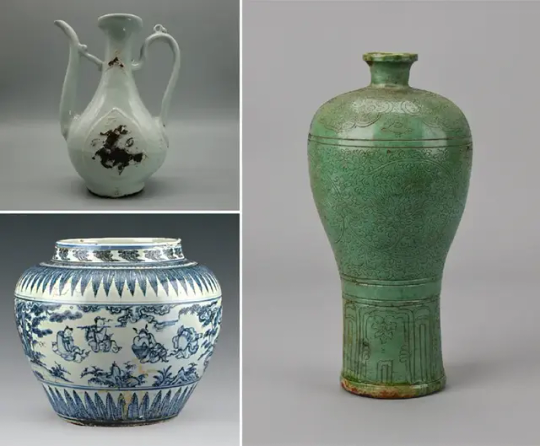
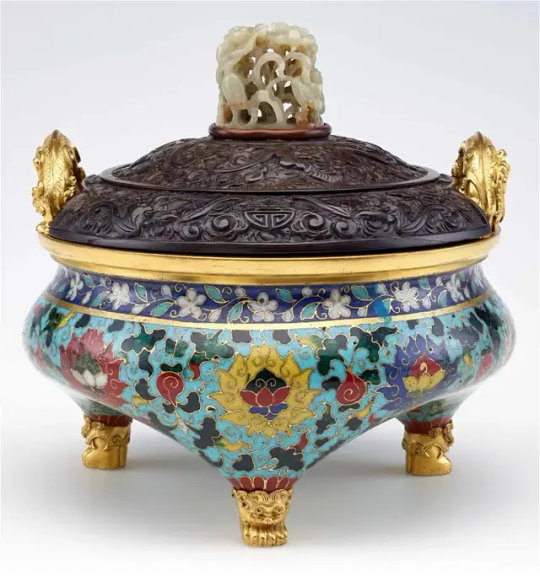
Many of the artifacts came from the Zhengde period of the Ming dynasty, which spanned 1505 to 1521. But others may be older, dating back to the time of Emperor Hongzhi, who reigned from 1487 to 1505, as Chris Oberholtz reported last year.
Archaeologists used manned and unmanned submersibles to collect the artifacts and gather sediment samples from the sea floor. They also documented the wreck sites with high-definition underwater cameras and a 3D laser scanner.
The project was a collaboration between the National Center for Archaeology, the Chinese Academy of Science and a museum in Hainan.
“The discovery provides evidence that Chinese ancestors developed, utilized and traveled to and from the South China Sea, with the two shipwrecks serving as important witnesses to trade and cultural exchanges along the ancient Maritime Silk Road,” says Guan Qiang, deputy head of the NCHA, in the agency’s statement.



During the Ming dynasty, China’s population doubled, and the country formed vital cultural ties with the West. Ming porcelain, with its classic blue and white color scheme, became an especially popular export. China also exported silk and imported new foods, including peanuts and sweet potatoes.
The period had its own distinctive artistic aesthetic. As the Smithsonian’s National Museum of Asian Art writes, “Palace painters excelled in religious themes, moralizing narrative subjects, auspicious bird-and-flower motifs and large-scale landscape compositions.”
The shipwreck treasures aren’t the only recent discoveries in the South China Sea, according to CBS News’ Stephen Smith. Just last month, officials announced the discovery of a World War II-era American Navy submarine off the Philippine island of Luzon.
By Sarah Kuta.




#900 Artifacts From Ming Dynasty Shipwrecks Found in South China Sea#island of Hainan#Ming dynasty#shipwreck#ancient artifacts#archeology#archeolgst#history#history news#ancient history#ancient culture#ancient civilizations#ancient china#chinese history#chinese art#ancient art
944 notes
·
View notes
Text
Sun in the Houses
In astrology, the Sun represents the essence of our being, our core identity, and vitality. As it moves through the twelve houses of the zodiac, it casts its illuminating light on different aspects of our lives, shaping our personality, ambitions, and experiences in distinct ways.

1st House: The House of Self
When the Sun resides in the 1st house, it shines a spotlight on your identity, physical appearance, and how you assert yourself in the world. Individuals with this placement often have a strong sense of self-expression and are seen as confident and assertive.
2nd House: The House of Values
Here, the Sun emphasizes your values, possessions, and sense of self-worth. It highlights your material goals and how you seek security and stability. People with this placement often have a strong desire for financial independence and may excel in endeavors related to money and resources.
3rd House: The House of Communication
In the 3rd house, the Sun influences your communication style, intellect, and immediate environment. It emphasizes learning, networking, and sharing ideas. Those with this placement are often articulate, curious, and enjoy mental stimulation through diverse interests and social interactions.
4th House: The House of Home and Family
When the Sun occupies the 4th house, it illuminates your roots, emotional foundations, and sense of belonging. It signifies your relationship with family, home environment, and private life. Individuals with this placement often prioritize emotional security and may have deep connections to their heritage and upbringing.
5th House: The House of Creativity and Romance
Here, the Sun radiates creativity, self-expression, romance, and pleasure. It emphasizes hobbies, artistic talents, love affairs, and children. Those with the Sun in the 5th house often have a flair for drama, enjoy being center stage, and seek joy through creative endeavors and passionate pursuits.
6th House: The House of Service and Health
In the 6th house, the Sun highlights your work ethic, daily routines, health, and service to others. It emphasizes practicality, efficiency, and attention to detail. Individuals with this placement often find fulfillment through helping others, maintaining order, and achieving personal wellness goals.
7th House: The House of Partnerships
When the Sun moves into the 7th house, it emphasizes relationships, partnerships, and collaborations. It highlights your approach to one-on-one connections, marriage, and the balance between self and others. People with this placement often seek harmony, fairness, and companionship in their personal and professional lives.
8th House: The House of Transformation
In the 8th house, the Sun delves into deep emotional bonds, shared resources, intimacy, and transformation. It signifies psychological growth, power dynamics, and the mysteries of life and death. Those with this placement often experience profound changes, inner strength, and may be drawn to occult or metaphysical studies.
9th House: The House of Philosophy and Higher Learning
Here, the Sun illuminates your beliefs, ideals, higher education, travel, and spiritual quests. It emphasizes expansion of the mind, cultural experiences, and philosophical pursuits. Individuals with this placement often have a broad worldview, seek meaning through knowledge, and thrive in exploring different cultures and belief systems.
10th House: The House of Career and Public Image
When the Sun reaches the 10th house, it highlights your ambitions, career path, public image, and reputation. It signifies your professional achievements, authority figures, and how you contribute to society. People with this placement often aspire for success, recognition, and may excel in leadership roles.
11th House: The House of Community and Aspirations
In the 11th house, the Sun emphasizes your social circle, friendships, group affiliations, and long-term goals. It signifies humanitarian efforts, innovation, and collective endeavors. Those with this placement often value friendship, progressive ideals, and may be drawn to activism or causes that benefit society.
12th House: The House of Spirituality and Inner Life
Here, the Sun illuminates your subconscious mind, solitude, spiritual pursuits, and hidden strengths. It signifies introspection, compassion, and the connection to the universal consciousness. Individuals with this placement often have a rich inner life, empathy for others, and may find fulfillment through creative or spiritual retreats.
©️kleopatra45
#astrology readings#sun#houses in astrology#sun in the houses#astroblr#astrology#astrology observations#astrology community#astro notes#astrology tumblr
731 notes
·
View notes
Text


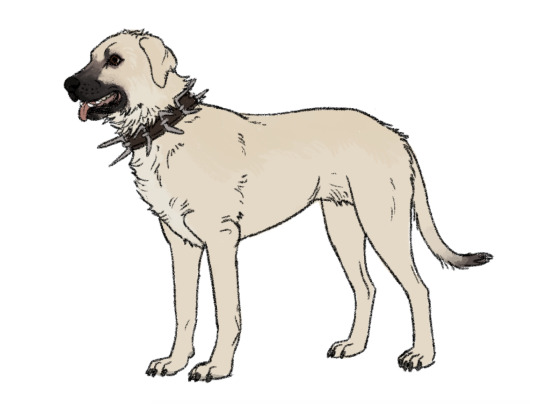
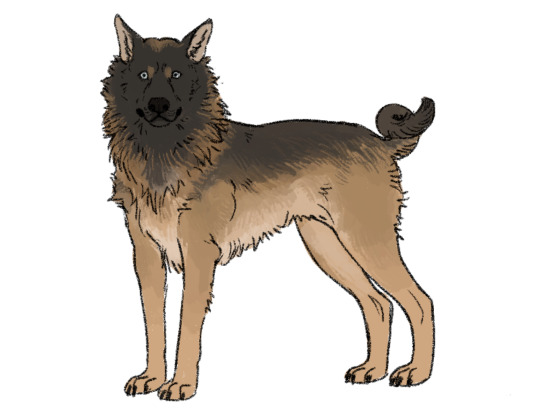

Four (relatively) distinct types of livestock guardian dogs in the Imperial Wardi region. (Left to right: hnorai dam, chin-tsimouna, dírgrahdain, and chin na Hittsanaedi)
Dog breeds in the modern sense of the word in which a dog is selected for highly specific physical traits and carefully bred to retain 'purity' is virtually nonexistent in this setting (and where similar practices occur, it's usually as an outlier situation surrounding a single dog rather than as a standard practice). Most working dogs first develop out of landraces via natural selection, and are bred according to their function above all else. Their forms are the results of natural pressures from their environments, the demands of their jobs, genetic isolation (or lack thereof), and often some degree of selectivity or preference for coloration or features.
These are the four types that occur within the region, all derived from a progenitor landrace guard dog (the last common ancestor of all four contemporary types probably existed about 950-1000 years before present). All share commonalities of a large size, rain-resistant hair, notably dense winter coats, a loud and deep bark, thick muzzles, and strongly sloping chests. They must be able to hold their own (usually through intimidation but occasionally in fights) against large predators that often physically outmatch them- lions, king hyena, hyenas, and wild dogs being most threatening to livestock. They also may have additional functions in dissuading theft and poaching of livestock by humans, and they may sometimes double as basic guard dogs of homes or villages.
Dogs here are bred almost entirely according to their function (you breed LGDs with LGDs, it doesn't usually matter if they look different or come from different stock), with the main exceptions being 'breeds' that are aspects of important cultural heritage or that have specific culturally/regionally preferred aesthetic traits. The chin-tsimouna is the most common of the three and is the result of minimally selective breeding (though some populations form unique strains or have a selective local status), while the other three are semi-isolated heritage types (the hnorai dam for some North Wardi groups, the dírgrahdain for most of the Hill Tribes, and the chin na Hittsanaedi among Ephenni Riverlanders).
---
Hnorai dam: Very rare in the contemporary, with undiluted animals of this stock surviving in some of the most isolated parts of the region's north. This type is distinct for typically having a somewhat stockier build than the others, solid coats, pointed ears, and a tail held upright and curved when relaxed. Most are solid white, gray, or black, and will often be assigned to horses of matching color. This is also the most 'basal' of the regional LGDs, a dog close to this in form (but probably not with solid coloration) was the common progenitor of all other livestock guardian breeds in the region. Variants on 'hnorai dam' are the common name, simply meaning 'guard dog' in the North Wardi language (as they are often used as village/household guards as well as livestock guardians).
Chin-tsimouna: This is the most ubiquitous type, occurring region-wide (and beyond) and used by a variety of peoples (throughout the core Imperial Wardi sphere and among the Cholemdinae, with some usage among the North Wardi, Hill Tribes, and Wogan). They have the most significant foreign ancestry (largely from Burri and Yuroma dogs) and most frequent 'crossbreedings' with feral populations. Due to these factors, the look of these dogs is highly variable (with the 'chin-tsimouna' name functionally being a catchall for any LGDs not of an otherwise specified type). There ARE some broad commonalities (beyond strictly the underlying features common to all these LGD types). The ears are rarely pointed, and usually are bent or lay flat. Fawn coloration with a melanistic mask is by far the most common, with white, gray, and black dogs coming in second (often semi-selectively bred or chosen to match the coats of their charges). Solid colored chin-tsimouna are very rare. There are numerous regional names for type-variants, but 'chin-tsimouna' is the most common descriptor for the overall type, meaning 'horse-dog' (in reference to their typical charges, who they uniquely live among).
Dírgrahdain: This is the native livestock guardian dog of the Highlands. They are the most physically distinctive from their counterparts, and their traits are among the most consistent (due to rarity of feral dog populations in their native range and their status in shared cultural heritage encouraging maintenance of their distinctive traits and discouraging crossbreeding). The most distinctive features are a dense mane, pointed ears, and tightly curled tail. An extended melanistic mask is highly common, and very pale 'evil eyes' are favored in this population, believed to be the most frightening to predators and evil spirits. The name dírgrahdain means 'liondog', mostly referring to their mane. [Extended dírgrahdain post here]
Chin na Hittsanaedi: This is the 'youngest' of the distinct types, and derives from a period of significant crossing between dírgrahdain and chin-tsimouna within the Ephenni riverlands (region south of the soutwestern Highlands, between and around the convergence of the Erubin and Nedachemi rivers) due to significant interaction and overlap of territory between the Ephenni and the West Rivers Hill Tribes under Imperial Burri occupation. The curled tail and pale eyes of the dírgrahdain is common in this population, though the pointed ears are rare and the 'mane' is less developed or absent. Most other traits are typical of the chin-tsimouna type. Dogs of this stock are mainly used in rural parts of the province of Ephennos, and their significance to aspects of modern era Ephenni cultural identity dissuades intentional breeding with both of their progenitor types. The name chin na Hittsanaedi means 'Riverlands dog' (more literally 'dog of the Riverlands').
#creatures#The chin na Hittsanaedi shown here depicts a conceivable coat pattern and appearance for Orange Son Of A Bitch of prev post
235 notes
·
View notes
Text
Historically Accurate
"I'm telling you, Hollywood is going down with all the woke crap! You know what they say: Go woke go broke!"
Julian and Wallace were on their way back from the lunch room and the former was listening to the latter complaining. Julian had tried to avoid any topic like this, but, really, it was a mine field with Wallace. Just about *every* topic had the potential to turn out political.

"I don't see what's wrong with a little inclusion in pop culture." Julian said, not wanting to argue but also not wanting to leave that opinion unopposed.
"Everything! It's just plain wrong, and it's brainwash, too. I mean, it's like a mind virus, poisoning everything! There's a western coming out next week. But it's all bullshit woke agenda again. The cowboy is black and gay! Literal brainwash and historical rewrite."
Julian frowned. How could an intelligent person like Wallace be so stupid at the same time?
"Why does that even bother you? I thought you hated westerns."
"Yes, that's not the point. Fact is, it's historically inaccurate and just pushing the woke agenda."
"Actually, I think it's not even historically incorrect." Julian pondered as they entered the lab using Julian's keycard and an iris scan of both scientists.
Wallace was borderline angry now.
"What are you talking about? Everyone knows that cowboys were the whitest and the straightest people there were."
"I'm not quite sure", Julian said. "Weren't there freed slaves and so on? And I would guess if you were underway with another guy for prolonged periods of time, not everything staid straight, too."
"Bullshit! Everyone knows cowboys weren't fags, and they were white."
Wallace seemed agitated now, and his usual stiff demeanor became even more pronounced.
Wallace was in his mid-forties, but the way he was talking, he seemed way older to Julian.
Julian on the other hand was awfully young for the position he had. Being 25, he still didn't look like he had finished college, even though he had his doctorate already.

It was really a bit sad, he thought. Two of the brightest minds and they were bickering over basic, meaningless distinctions like ethnicity or sexual orientation.
"We could just ask the computer." he proposed, but Wallace frowned.
"We are not supposed to use the equipment for private research." he said.
'The computer' was part of the highly secretive project they worked on. When finished, it was supposed to be a time machine, simple as that. The actual time travel device didn't work properly yet, but a part of it, a chronoton boosted quantum computer that was able to access history itself to answer questions about the part, was already functioning quite well.
"But we are supposed to test it from time to time. Are you afraid of the answer it might give?"
"Of course not." Wallace grumbled. "Fine. Computer! Is there any historical evidence of gay black cowboys?"
The voice activated system acknowledged the request with a beep. While waiting for the answer, Julian checked the parameters of the system and found them in near-perfect condition.
Finally, the system answered, with the neutral male voice it was programmed with.
"A significant portion of cowboys consisted of people with African heritage, especially after the freeing of slaves after the civil war. Homosexual acts and attraction were common among cowboys, especially during the trail drives. Demonstrating..."
"Hrmpf." Wallace said, clearly not happy.
Julian, who was still checking the readings, scratched his head.
"Did you remember to disconnect the capsule before making the query? It seems to be drawing power."
"Ah, crap. That's just because of all the bullshit talk. Computer, stop!"
"Unable to comply. Demonstrating... Target: Montana Frontier Area, June 1865..."
The white walls of the chamber started to glow in an ever brighter white that was beginning to hurt the eyes.
"Crap. Julian, cut the power!" Wallace said, now with a clear notion of fear in his voice. The younger scientist didn't answer but tried to do as he was told - but did not succeed in time.
Suddenly, with a flash, their surroundings changed and the two of them found themselves in the middle of a rugged mountain range, on the border of a pine forest. It was late afternoon and the scientists found themselves in a just set-up camp. Two horses were standing nearby, and a small herd of cows was grazing at a meadow.
Wallace sighed and shook his head angrily. "Just great. Look at the mess you just put us in. Now we have to wait until we're rescued. And, apparently, we have to meet some black homo cowboys."
Julian looked around but couldn't see anyone around.
"I would have also guessed so, but there doesn't seem to be anyone there."
His heart sank as he had a terrible suspicion. He had been experimenting lately with a normalization circuit that would embed the time travelers into history instead of superimposing them onto it. That was - according to his theories - a rather elegant way to resolve the repelling effect the historical structure had, but it wasn't finished by any means. It had never been tested and even theoretically, it wouldn't be able to achieve a partial embedding, only a full one at best. And the more he thought about it, the more he was convinced that it had still been connected to the system.
As Julian thought about how to break it to Wallace, he noticed something strange about the other scientist. It could be a trick of the light, but he looked way more tanned than before.
"Uhm... It might actually be somewhat worse than that. I think my normalization circuit was still active when you activated the machine."
"What? What does that mean?" Wallace looked at him, furiously now.
"Well, I would guess..." Julian struggled and gave up. "Look at your hands, I think it's pretty self-explanatory."
Wallace looked down at his darkening hands and paled. Even now, he still had a considerably darker skin tone than before, darkening with every passing second.
"Shit." he said. "That's what you get for fucking around with a half-finished experiment."
Julian didn't even dare to mention his suspicion. If his normalization circuit was really active, that would make Wallace an actual, black cowboy, and not just him. Julian was also a time traveler, so he, too, would be affected.
Meanwhile, the changes in Wallace seemed to have proceeded. His facial structure looked like it was in motion before finally settling on a generally broader, manlier shape: The jawline became more pronounced, and his cheekbones raised.
"Is there... anything going on with me as well?" Julian asked.
Wallace looked over at him.
"Yeah, your hair color is changing, and I think your eye color. Blonde and blue-eyed, how cliché. But most importantly, you're not becoming fucking a fucking Black man."
Wallace didn't say Black man.
For some reason, this didn't bother Julian half as much as it should have. He felt rather at ease, and the untamed wilderness around him awakened a sense of adventure inside of him that he didn't know was in him.
Meanwhile Wallace was also feeling a change within. A surge of confidence emerged from within him that was entirely alien to the deeply insecure man at first, but quickly became more and more part of his personality. It was like his core was solidifying into a confident and assertive nature, a boldness and quiet he secretly always wished he had. At the same time, his body structure changed considerably.
Where before, Wallace had been a physically unimpressive mid-forties man, it now seemed like the years melted off of him, and for every year that he lost, he gained three pounds of muscle mass and beef. His shoulders widened, his height increased, and his frame expanded in order to accommodate the new body mass.
"It's not that bad, ain't it?" While Julian's body had not changed much besides the hair and eye color, his voice sounded entirely different now. It had a southern lilt to it, but it was charismatic and charming. It was the kind of voice you could listen to for hours without end, perfect for reading an audiobook - or telling campfire stories.
"Well now, I ain't too sure 'bout that." Wallace's voice had changed even more considerably when he answered. He had gained a thick southern accent, and his voice had dropped to a low and smooth voice that sounded commanding even if he didn't intend to.
"Ha, look at that, your skin's startin' to change now, too!"
And really, Julian's skin had started to adapt as well, but it was quickly becoming apparent that it went a different route than Wallace's. Instead of darkening to the almost black tone that he was sporting, Julian's skin became rougher and got a sun-kissed tan instead. His facial features sharpened, as his cheekbones looked chiseled all of a sudden and a rugged beard texture was adorning his chin. Julian seemed to notice it, too, since he started touching his new face immediately.
"Cool! Always wondered what I'd look like sportin' a beard." he said, apparently not too unhappy with the changes.
There was no denying Julian looked good, which made Wallace feel a touch of jealousy. In his opinion, it wasn't fair that he was the only one having to deal with the black skin. That feeling quickly faded, though, as his changes continued. His hair became very short, curly and dark. At the same time, a short beard formed on his chin and upper lip, giving him an even manlier appeal. At the same time, chest hair sprouted, sparsely of course, as it was normal for a man of his heritage. A strange feeling overcame Wallace. He wasn't necessarily *proud* to be Black now, but he also didn't mind it anymore. He was proud of a lot of secondary assets, though, like his bulging muscles or his handsome face. As his eyes became a dark brown, he had to smirk as he sat down by the fire, readjusting himself in the process. And, of course, his big cock, which might also have been positively influenced by his new ancestry.
Wallace watched as Julian turned around and tended to the horses. His body was now, finally, also changing. It didn't become nearly as bulky as his own, but instead lean and agile, with narrow hips and a well-distributed surprising strength, as Wallace knew. While Julian was busy with the horses, Wallace had a good view of his ass. It filled out the jeans just so well, and Vallace only noticed now that the other man's attire had changed. He was clad in a pair of blue jeans, a vest and, of course a Stetson now, and Vance always thought that this outfit accentuated the best parts of his partner quite well. He preferred black leather, himself, since the material was sturdier and felt better on the skin.
Vince felt his cock hardening in his leather pants and readjusted himself again while also leaning back and spreading his legs to make more room for the erection. He wasn't afraid of anyone seeing his rude behavior. The only other man within a wide range was Jesse, the owner of that juicy ass. And he was allowed to see... well, everything.
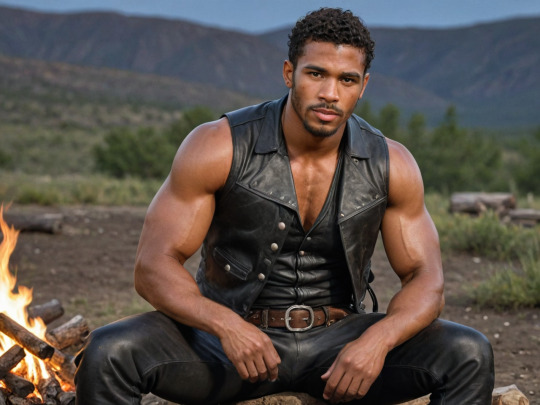
Vince waited patiently until Jesse returned to the campfire, with a big smile on his face.
"How them horses holdin' up, partner?" Vince asked.
"They're good. Just a tad worn out from today's ride." Jesse answered.
"Well, there's somethin' else needs tendin' to, if you're free to lend a hand. Or an ass." Vince grinned and made his cock throb in the confines of his tight leather pants.
Jesse grinned at the display of masculinity and massaged his own cock.
"Hell yes!"
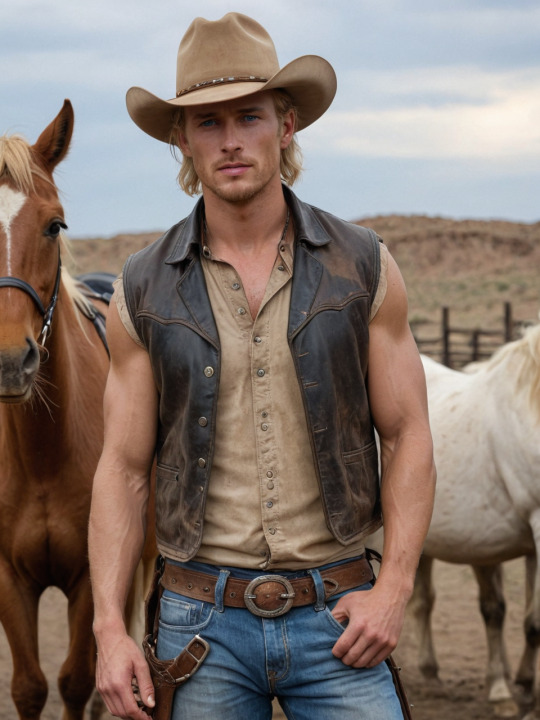
As Jesse moved over in his usual graceful movements, Vince leaned back. There really wasn't anything better than being a big, black cowboy. Especially not with a partner like Jesse, who was always happy to make the nights in the wilderness a little less lonely.
Certainly not poor and lonesome! Also check out this awesome writer!
There are a few more versions of Jesse and Vince, over at my tip jar.
#male transformation#straight to gay#muscle transformation#racial transformation#cowboy#historical transformation
383 notes
·
View notes
Text
Ink!Sans Cultural Inspiration
(revised version)
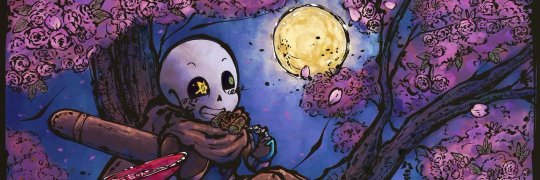
art by @/sakuramochi64 on twitter
Disclaimer!
This post aims to explore and analyze both the prominent and subtle East Asian cultural influences—primarily Japanese—that have shaped the character of Ink!Sans. By examining these influences, we can better understand how traditional East Asian aesthetics and artistic practices are woven into Ink’s design and powers. If any information in this essay is inaccurate or unintentionally offensive, please don’t hesitate to reach out! This essay serves as a revised and updated version of the analysis conducted last year, incorporating new insights and refined perspectives to enhance our understanding of Ink!Sans’s character and his cultural influences.
Ink!Sans by @comyet/@myebi
↓↓↓↓↓↓↓↓↓↓↓↓↓↓↓↓↓↓↓↓↓↓↓↓↓↓↓↓↓
.
.
.
.
''It was a night where it felt like i was a miserable artist and i was very frustrated at my work and it felt like i wasn’t worth alot (we all have these), then I came across a picture of a japanese ink brush, and it was all I needed to start doodling a concept.
That’s how Ink is born.''
.
.
According to Ink’s creator, Comyet, the idea for Ink!Sans was sparked by an image of a brush specifically crafted for sumi and Chinese ink art. In China, the tradition of using specialized ink brushes, known as Chinese writing brushes, has been a foundational element in the art of calligraphy and traditional painting for centuries. These brushes are highly valued for their precision and versatility, allowing artists to produce a range of strokes, from fine lines to bold, expressive swashes. The brush itself is composed of a bamboo handle and a carefully tapered head made from animal hair, designed to hold and release ink in controlled flows.
This tool became central not only in Chinese culture but also influenced Japanese, Korean, and Vietnamese art, where calligraphy holds a similar cultural significance and is closely tied to writing systems derived from Chinese characters. These brushes symbolize the control, fluidity, and intentionality required in both written language and visual art across East Asia. This deep-rooted cultural importance of the ink brush inspired Ink!Sans's character design and powers, allowing him to wield 'ink-based' abilities, symbolizing both creativity and adaptability. His main weapon—a brush—reflects this heritage and further emphasizes the connection between art and battle, as he channels the brush’s traditional associations with fluidity and strength into his fighting style, merging the arts of calligraphy and combat.
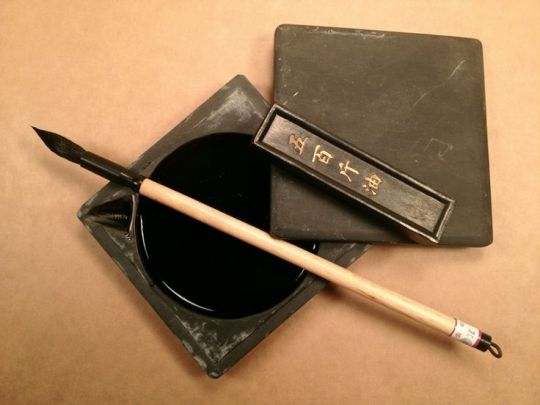
(visual example of an ink calligraphy brush)
At glance, the ink material is an enduring medium that still surrounds society till this day and it's used in multiple cultures across the world.
Writing with ink calligraphy brushes is also common in Europe and the Middle East, where artisans developed ink using a unique combination of iron salts and oak galls. This type of ink, known as iron gall ink, initially appeared in rich, dark tones, making it highly desirable for manuscripts and official documents due to its bold, readable quality. However, over time, the iron in the ink oxidized, resulting in a distinct color shift to warm, rust-like brown tones. This characteristic fading can still be observed today in ancient manuscripts, such as early European literary works, where the reddish-brown hues give a sense of history to these documents. The durability and aesthetic appeal of iron gall ink contributed significantly to its prevalence in both regions, influencing the artistry of calligraphy and manuscript illumination for centuries.
Like previously mentioned, Ink!Sans was inspired by traditional ink materials developed in East Asia, where artisans mastered the creation of carbon-based black ink, often using soot or charcoal mixed with binding agents like animal glue. This type of ink, known for its rich, deep color and lasting durability, was a staple in East Asian calligraphy and artwork. Unlike iron gall ink, this carbon-based ink maintained its dark, almost jet-black color for centuries, even in varying environmental conditions. The resilience of this ink allowed ancient texts, paintings, and scrolls to retain their striking contrast and clarity, making it a celebrated medium in East Asian art and culture. Ink!Sans draws inspiration from this enduring quality, symbolizing strength, creativity, and the timelessness of artistic expression

(visual example of an ancient art piece that used carbon-based black ink)
To note, unlike iron gall ink, carbon based inks are still very common to this day.
Although the primary Chinese calligraphic scripts were well established by the fourth century, calligraphy as an art form has continually evolved over the centuries, adapting to new cultural and aesthetic influences. Skilled calligraphers, who spent years mastering brush techniques and perfecting their own unique hand, were celebrated for their distinctive styles, and their works became templates for both art and personal expression. Over time, subsequent generations of artists studied these revered styles, incorporating and reinterpreting them to reflect their individual voices and the changing social landscapes. This ongoing transformation has kept Chinese calligraphy dynamic and relevant, and it remains a respected art form today, blending tradition with contemporary aesthetics.
In Japan, calligraphy also held deep cultural significance, symbolizing both personal refinement and intellectual achievement. Calligraphy was regarded as a mark of scholarly sophistication and artistic taste, with a variety of tools developed to enhance the writing experience. One notable example is the suzuribako ("ink stone box"), a portable lacquered wood box designed to store an inkstone, water dropper, brushes, and solid ink sticks. These boxes were crafted with precision and adorned with intricate lacquer designs, reflecting their owner’s status and appreciation for art. Suzuribako were lightweight and convenient, enabling calligraphers to take their tools outdoors or to scenic locations to write letters, diary entries, or poetry. This practice not only facilitated creativity but also connected the act of writing with nature, creating an immersive experience where one could find inspiration in the surrounding beauty while crafting words in elegant brushstrokes. The combination of these refined tools and settings underscored calligraphy’s role as a deeply personal and aesthetic pursuit in Japanese culture.
From this perspective, it is essential to highlight that Ink's character draws inspiration from traditional ink calligraphy, a detail reflected in his distinctive speech font, 'Note This'.

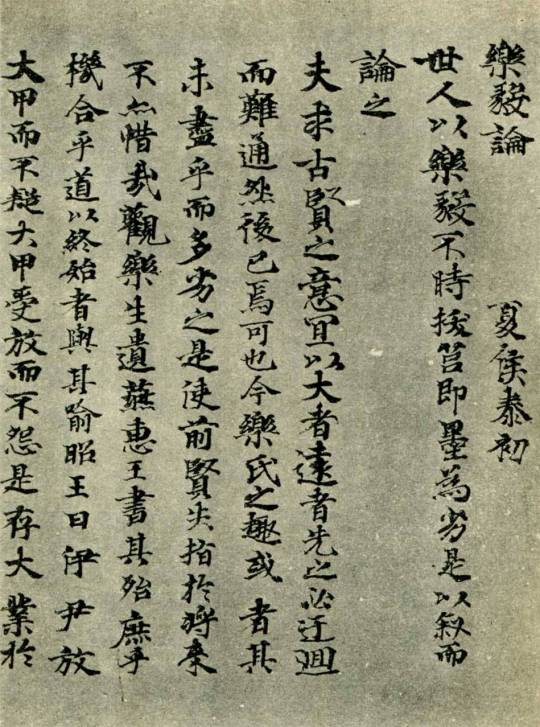
(Example of Ink's canon speaking font and ancient calligraphy)
Also clarified in an ask on her side blog, Comyet explained that traditional samurai clothing served as a key inspiration for Ink's outfit redesign in 2020. Ink's creator thoughtfully incorporated these characteristics to enhance Ink’s visual appeal and connection to his main source of inspiraton. This influence is particularly noticeable in the first and second analyses of Ink's character, where we see clear visual cues from iconic Japanese garments like the hakama.
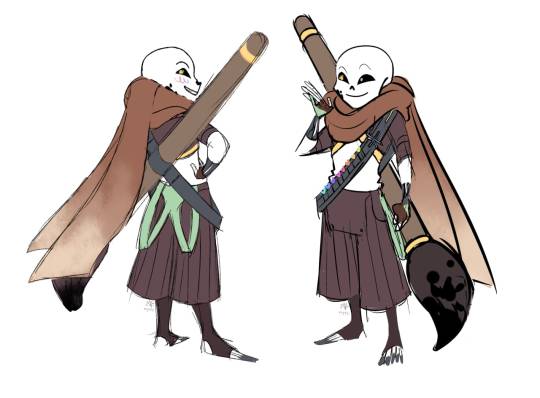
(Ink!sans reference sheet for the 2020 design, credit goes to @/comyet)
Ink's pants were inspired by hakama, a traditional Japanese garment known for its distinctive design as skirt-like trousers, typically worn over a kimono. Hakama are historically associated with a range of activities, from ceremonial occasions to martial arts, and are often considered a symbol of status and refinement. Specifically, Ink's pants appear to be inspired by the umanori style of hakama, which is characterized by a split or division in the middle, allowing for greater freedom of movement. This style was traditionally worn by samurai and other individuals involved in horseback riding, as the design allowed for ease of movement and flexibility when mounting or riding a horse.

The umanori hakama were not only practical for riding but also served as a functional yet elegant garment, embodying the balance of form and function typical in Japanese clothing. By incorporating this style into Ink's character design, Comyet likely intended to evoke themes of mobility, agility, and strength, while subtly referencing Japanese martial traditions and the samurai ethos. This choice enhances Ink's overall aesthetic, highlighting his dynamic, action-oriented nature, suggesting that his character is both rooted in tradition and capable of fluid, graceful movement.
The hakama was not merely a functional garment but also a powerful symbol of social status, loyalty, and the samurai's role in Edo society. While the hakama was predominantly worn by samurai, it also found its place in the wardrobe of scholars, priests, and members of the aristocracy, who wore it as part of their ceremonial dress.
Furthermore, Comyet has explained that Ink's outfit and appearance were partially inspired by the clothing worn by samurai, as depicted in ukiyo-e prints from the Edo Period of Japan. Ukiyo-e, which translates to 'pictures of the floating world,' was a popular genre of woodblock prints and paintings that flourished from the 17th to the 19th centuries, showcasing scenes of everyday life, landscapes, kabuki actors, and beautiful women. However, samurai were also common subjects of these prints, often portrayed in full regalia, highlighting their status and discipline.

(this line of text was found within old versions of Ink's FAQ post, mainly from 2020-2021)
In these ukiyo-e representations, samurai are frequently depicted wearing a distinctive combination of garments, including elaborate kamishimo (formal attire worn by samurai), hakama (wide trousers), and haori (a kimono-style jacket worn over the kimono), along with ornate accessories such as sashes and swords. These samurai were often shown in dynamic poses, suggesting a sense of power, grace, and readiness for battle, which reflected their societal role as both warriors and landowners.
Ukiyo-e representations of samurai often carried deeper meanings beyond their visual impact. Samurai in these prints were more than just warriors; they were cultural icons, symbols of virtue, duty, and sacrifice. Some prints portrayed samurai in the context of popular stories or historical events, such as famous battles or legendary acts of heroism. For example, the prints often depicted samurai as loyal retainers or leaders fighting for justice, reflecting the ideal of bushidō, the samurai code of ethics, which emphasized virtues like loyalty, courage, and respect.
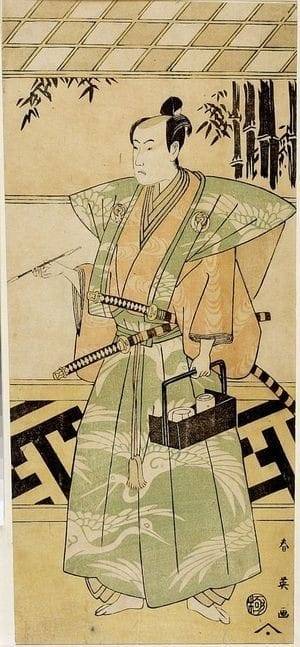
(Ukiyo-e art made by Katsukama Shun'ei, Edo Period)
During the Edo period, the hakama was an important garment worn by the nobility as part of their formal attire, complementing other traditional outfits of the time, such as the noshi and kariginu, a sleeveless jacket with distinctive, sharply defined shoulders. These garments were designed to symbolize the status and refined taste of their wearers. The hakama, with its wide, flowing silhouette, was highly functional and practical, allowing for ease of movement while maintaining an air of elegance.
On another note, Ink's design is not the only aspect influenced by Japanese culture; the musical themes associated with him also draw significant inspiration from traditional Japanese music, as described by Comyet. The incorporation of these musical elements into Ink's character enhances the depth and cultural resonance of his persona, creating a multi-layered experience that ties his abilities, appearance, and thematic representation to a broader cultural context.
A predominant theme associated with Ink that highlights his deep inspiration from traditional Asian styles is one called 'BrushWork.' This musical theme, featured in the popular series Underverse, plays a crucial role in reflecting Ink’s connection to East Asian culture, particularly through its use of the shamisen, a traditional Japanese stringed instrument, and a flute. The choice of the shamisen in this composition is significant, as it evokes the soundscape of Japan, with its distinct, plucked tones often associated with traditional music, storytelling, and performance arts.
The shamisen is a core instrument in genres such as kabuki (a traditional form of Japanese drama) and bunraku (puppet theater), where it is used to underscore the emotional intensity and narrative depth of the performances. In BrushWork, the shamisen helps set the tone for Ink’s character, enhancing the theme of 'brushwork' through its fluid, emotive sound.
Honorable mention: The instrumental video for ''Soulless Heart'', features an artwork that is inspired by traditional sumi-e (ink wash painting), a Japanese art form renowned for its elegant brushwork and minimalistic yet profound depictions of nature. This particular artwork, which accompanies the music, was created by the talented artist @/sakuramochi64, whose style reflects the delicate balance and graceful simplicity typical of sumi-e paintings.
.
.
.
Sources
1.National Museum of asian art (materials & techniques. Ink section)
2. Asian Brushpaper (an-overview-of-chinese-ink-history)
3. Wikipedia (wiki Hakama-pants+Shamisen)
4. Aikido Journal (Hakama-101)
183 notes
·
View notes